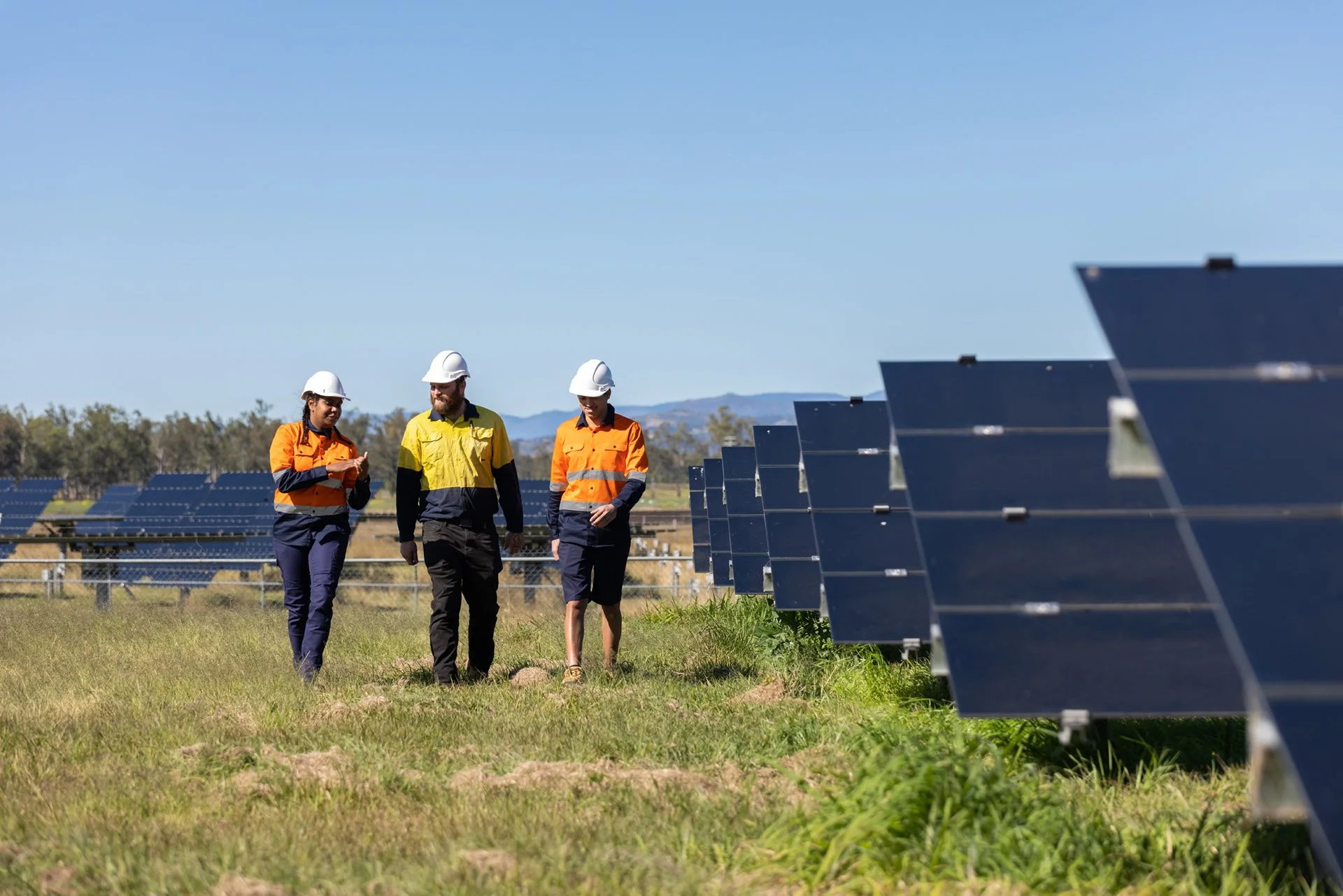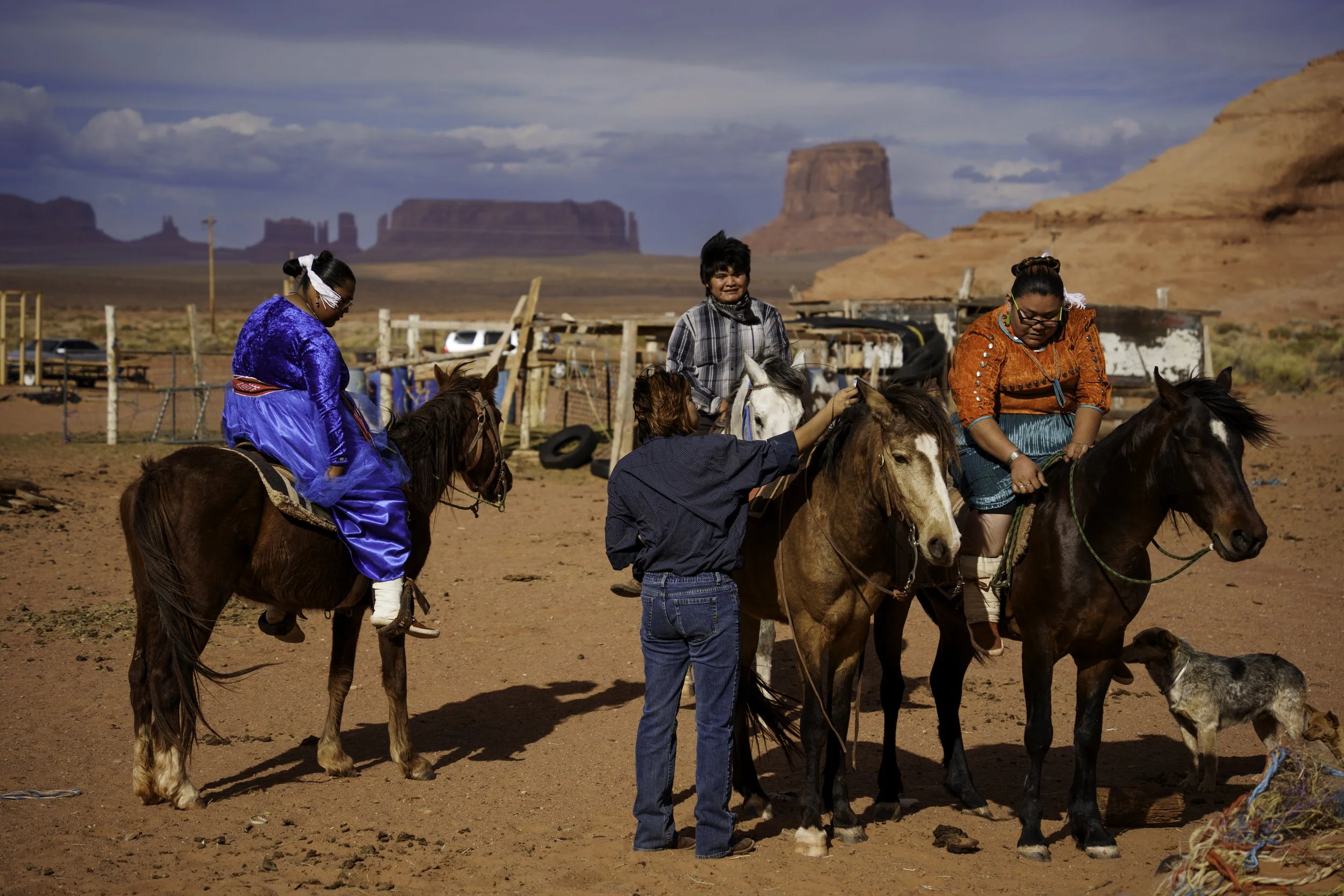Sovereignty isn’t symbolic, but systemic
NRTD is a community-focused initiative, which means the indigenous peoples we serve remain in full control of their own destiny. Our vision is to help establish self-sustaining development zones where renewable energy, technological investment, and existing tribal infrastructure can live in harmony, securing the future for the next generations.
Below, you will find a wealth of resources regarding what NRTD does, how we do it, and how we are maximizing respect for native sovereignty.
Community FAQ
-
Absolutely not. NRTD is focused on empowering Native peoples through strategic partnerships. All ownership, governance, and long-term benefits flow to the nations we serve. Furthermore, all development decisions will go through the proper tribal approval processes, ensuring that nobody loses access to housing, grazing permits, or land rights.
-
NRTD is a private development partner offering experience in renewable energy, technology, and project financing. Our job is to bring together the capital, talent, and technology to advance native energy sovereignty and economic mobility.
-
Different projects may involve different groups of developers, as it’s unlikely any two projects will have the same goals, require the same funding, etc. It is not only NRTD’s job to find these strategic partners, but also to ensure that they are equally focused on helping Indigenous nations control their energy, economy, and destiny.
-
This is the term used to describe what happens when projects are still being evaluated. At this stage, NRTD and our partners will conduct surveys and evaluations to ensure that each project is environmentally, culturally, and technically sound.
It typically includes the following steps:
Checking wildlife, plants, water, sacred sites, and cultural areas.
Studying soils, drainage, and land conditions.
Mapping where power, water, gas, and fiber lines are located.
Sharing updates with the community and listening to feedback.
The goal of Phase One is to make sure development is responsible, respectful, and beneficialbefore any ground is ever broken.
-
No. These sorts of approvals are limited to feasibility work only. Any actual construction or development requires a new, separate approval process. This only occurs after results are shared with the community.
-
No. No one will be asked to give up their homes, grazing permits, or land rights for any current projects. It’s important to remember that all land use must go through the proper processes, which are designed to work with existing landowners and permit holders, not to displace them.
-
Every NRTD project is guided by a commitment to respect, transparency, and community control. Before any construction begins, projects go through multiple stages of review and must earn community approval.
Local chapters and governing bodies have the right to review findings and vote before any development moves forward.
All projects follow federal, tribal, and environmental laws, including cultural preservation and wildlife protection measures.
Regular public meetings, reports, and open feedback sessions keep residents informed and involved in decision-making.
Grazing, farming, and cultural practices are protected and integrated into project planning wherever possible.
These safeguards ensure that development happens with the community, not to it.
-
If a project moves forward after successful studies and community approval, it can bring a wide range of benefits designed to strengthen the local economy and improve daily life.
These include, but are not limited to:
Jobs – NRTD development projects will create both short-term construction jobs and long-term careers in operations, maintenance, and technology.
Training – Many projects will offer skill-building and certification programs to prepare community members for high-quality employment in energy and related industries.
Community Benefit Agreement - will be created in cooperation with chapter officials and community members.
Infrastructure Upgrades – Many projects will include investments in roads, water systems, power lines, and internet connectivity, which will improve access and reliability for everyone.
Each project is designed so that the community shares directly in the prosperity it creates for generations to come.
-
Equitable participation means the local community will have the opportunity to negotiate benefits that align with its priorities. This helps ensure that local voices don’t just have a say, but function as prime decision-makers.
-
Most projects will deliver new or upgraded infrastructure, including power lines, fiber internet, roads, and water systems. These sorts of investments not only benefit the project but also local populations.
-
By providing reliable, locally generated power, the project will make the surrounding investment zone much more attractive to new businesses. This will help create lasting opportunities for economic growth and stability.
-
The agrivoltaics design allows livestock to continue grazing safely under and around solar panels. The panels provide shade, reduce heat stress, and help conserve water while improving both animal health and land conditions. You can find out more about the benefits of agrivoltaics below.
-
NRTD’s approach begins with the belief that modern development and traditional lifeways can strengthen one another when projects are planned with respect, transparency, and community guidance. Every product starts by listening to local voices so that we can ensure cultural and environmental priorities guide each step of development.
-
Our work is designed to build and reinforce Native sovereignty by ensuring that Indigenous nations have full ownership and control over their energy, infrastructure, and economic future. Our projects are structured so that authority, contracts, and profits remain in Native hands. This approach allows tribes to make independent decisions about how land and resources are used while ensuring that the benefits flow directly to their people rather than to outside developers.
On Agrivoltaics:
-
Agrivoltaics is the practice of combining solar energy production with traditional farming and grazing, allowing both to thrive on the same land. Instead of replacing agriculture, agrivoltaics create a system where the land continues to feed families and livestock while also generating clean, renewable power.
Here are some facts regarding the practice:
Sheep and cattle can graze under or around the panels. In fact, the shade helps protect them from the heat and saves water.
Farmers can still grow grass, native plants, or forage crops under the panels.
Because the same land produces food and energy at the same time, we can maximize productivity without disturbing existing operations.
It shows that development and tradition can go hand in hand.
In Native communities, this model represents a balance between innovation and tradition. It is an excellent way to advance energy independence while preserving the values and livelihoods that have sustained the land for generations.
-
Yes. Agrivoltaics are completely safe for people, animals, and the environment. Solar panels do not emit radiation or harmful chemicals. In fact, they absorb UV light rather than add to it, helping to reduce heat and light stress on the land below.
Modern panels are made from stable, sealed materials that do not release toxins or create health risks. Solar power is one of the cleanest and most widely used energy sources in the world, with successful agrivoltaics projects already operating across the United States and on other tribal lands.
-
Studies show that animals actually do better under solar panels. The shade protects them from extreme heat, reduces heat stress, improves forage conditions, and lowers water needs, helping livestock stay healthier and more comfortable. This applies to sheep, cows, goats, and other common grazing animals.
-
Not at all. Agrivoltaics are specifically designed to protect and even improve the health of the land. Unlike traditional industrial projects, agrivoltaic systems use light-touch construction methods that minimize soil disturbance and preserve the natural landscape. The panels are also raised so water, sunlight, and airflow can continue to reach the ground, allowing native plants and grasses to thrive underneath.
Geothermal Energy Production and its Effects
-
Geothermal energy uses heat from beneath the Earth’s surface to generate electricity or heat and cool buildings. It’s a reliable and low-emission energy source that works day and night, regardless of the weather.
Geothermal works well in areas where the Earth’s internal heat is close enough to the surface to be safely and efficiently harnessed. Many parts of the American Southwest, including many Native lands, are sitting on a goldmine of geothermal resources.
-
Yes. When properly designed and operated, geothermal is one of the safest energy sources in existence. It doesn’t produce harmful air pollutants or greenhouse gases, and its overall environmental footprint is very small. With proper monitoring and community oversight, the health and environmental risks are extremely low.
-
Geothermal energy provides powerful and long-lasting benefits for local communities. Just as solar does for the sun, it turns the Earth’s natural heat into a dependable, sustainable energy source that supports both people and the environment.
The primary advantages include:
Reliable Power – Geothermal provides steady, around-the-clock electricity and heating or cooling.
Clean Air and Lower Emissions - Geothermal produces minimal greenhouse gases or pollutants, improving air quality and public health compared to fossil fuels.
Efficient Land Use - Geothermal facilities require a smaller surface footprint, allowing more land to remain available for cultural, agricultural, or natural use.
Economic Growth – Geothermal infrastructure creates local jobs, attracts infrastructure investment, and builds workforce capacity in fields like energy, construction, and environmental science.
The goal of geothermal is to deliver clean, reliable energy that strengthens communities, supports local economies, and honors the land’s natural balance for future generations.
-
It’s important to note that geothermal energy has been safely used for decades in places like California, Nevada, and the American Southwest, with very few incidents of concern.
Though rare, some side effects include:
Small, seismic events sometimes occur when water or steam is injected into deep rock layers. These are usually too weak to be felt on the surface and are closely monitored through advanced seismic sensors.
Geothermal plants may draw fluids with minerals, sulfur, or salts out of the ground. Most geothermal plants utilize closed-loop systems that re-inject this fluid back into the ground.
There can also be small amounts of steam or mineral gases released during energy production, but these emissions are extremely low compared to fossil fuel plants.
About Us
Follow Us






